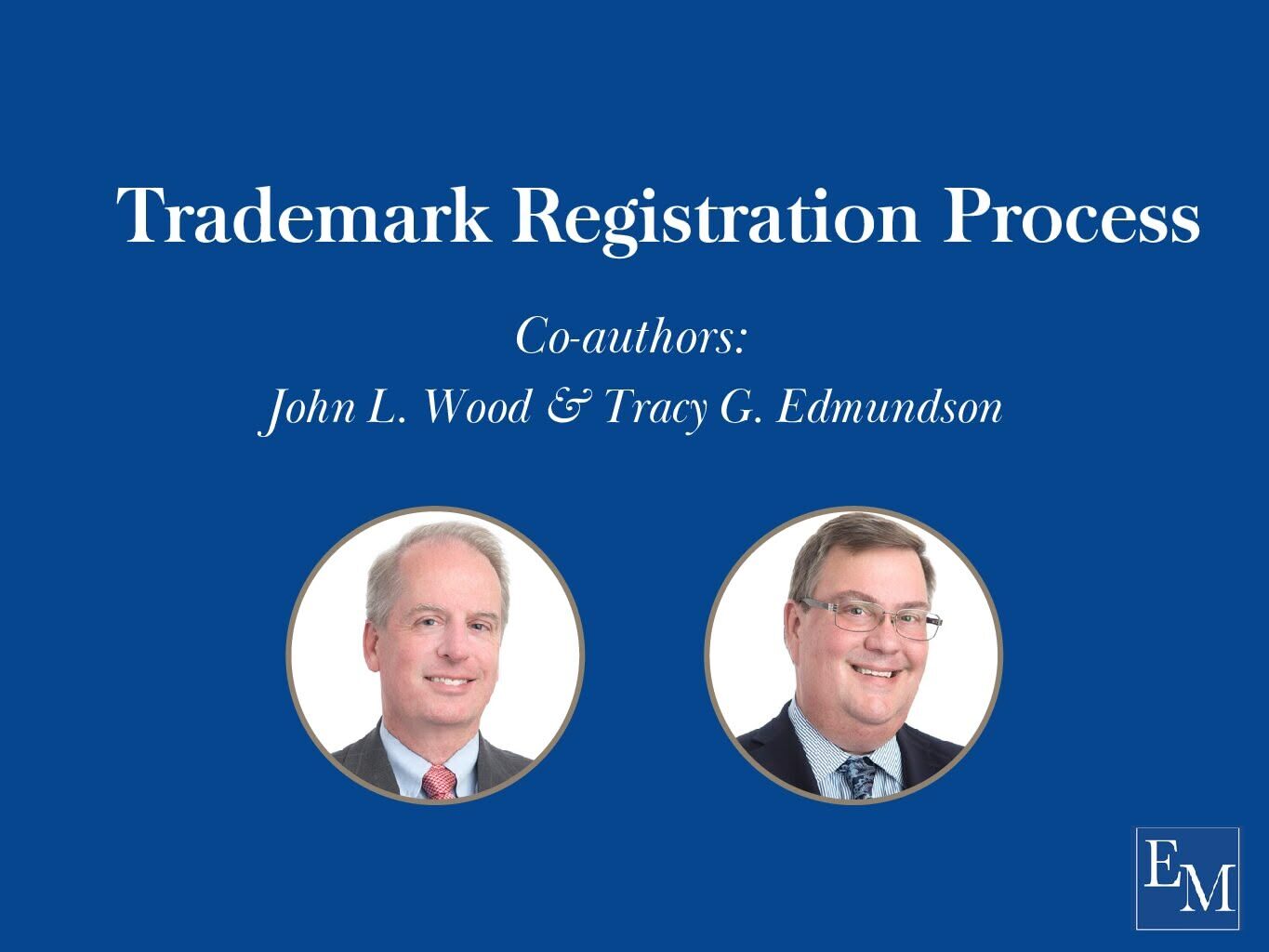Trademark Registration Process
A trademark application can usually be prepared in two to three hours of attorney time. The applicant may file (1) a “use” application or (2) an “intent-to-use” application. Each of these applications has different filing requirements.
What is the difference between a “Use” application and an “Intent-to-use” application?
In an intent-to-use application, there must be included, among other things, a drawing of the mark that is intended to be used and a description of the particular goods/services in connection with which the applicant has a bona fide intention to use the mark. In a use application, there must be included, among other things, a drawing of the mark that is used, the particular goods/services in connection with which the mark is used, and allegations of the applicant’s first use of the mark in connection with the goods/services. Further, in each of the foregoing applications, the applicant must sign an oath (or declaration) indicating the truth of the facts asserted in the corresponding trademark application. An advantage of an intent-to-use application is constructive use is deemed to have commenced from the date of filing the application. This constructive use can be critical in some circumstances when determining priority of use.
After the trademark application is filed at the U. S. Patent and Trademark Office (USPTO), the USPTO assigns the trademark application to an examiner. The trademark application is usually assigned to an examiner within three months after the application is filed. The examiner evaluates a number of criteria to determine if the trademark can be registered including performing a search of trademark records to determine whether the proposed mark is confusingly similar to any marks of record
.
What is an Office Action?
If the examiner finds an issue with the proposed trademark, a report, referred to as an “Office Action,” is prepared by the trademark examiner and is forwarded to the attorney. The Office Action may reject the proposed trademark based upon a variety of grounds, including confusing similarity with existing mark registrations, descriptiveness of the mark, technical objections, or for a variety of other reasons. Usually, if the application is rejected, the trademark examiner sets a six-month deadline for response to the Office Action.
How to Respond to an Office Action?
After a rejection, the client and the attorney consult with each other and strategize in order to prepare a response, called an “Amendment,” which can include arguments and/or amendments in an attempt to achieve allowance of the trademark application. Generally, amendments to the drawing of the proposed trademark will not be permitted.
What is a Final Office Action?
When the response is received by the USPTO, the same trademark examiner usually reconsiders the trademark application. Hopefully, the trademark examiner will allow the trademark registration, but the examiner may repeat the rejections. If the examiner rejects the trademark once again, then the examiner may issue the rejections in a “Final Office Action.” If the rejections issued in a Final Office Action are not overcome by subsequent Amendments within six months after the date of the Final Office Action, then the application will become “abandoned”. An appeal of final rejections may be filed within the six months after the Final Office Action so that the Trademark Trial and Appeal Board (TTAB) reviews the examiner’s rejections of the trademark application.
What is Publication for Opposition?
If the trademark examiner allows the trademark application, then the trademark will be published for opposition. The USPTO will inform the attorney when the trademark will be published for opposition. The trademark is published in the “Official Gazette” which is a publication of the USPTO that is regularly reviewed by trademark attorneys throughout the country. If an existing mark owner files an opposition during the 30 days after publication, then an opposition proceeding, like a mini-litigation, is held before the TTAB at the USPTO to adjudicate whether registration is proper.
If no opposition to the published trademark is received by the USPTO within 30 days, then the trademark is registered. Even after registration, a mark may be canceled through a “cancellation” proceeding initiated by another mark owner. The cancellation proceeding is also like a mini-litigation before the TTAB to adjudicate whether registration was proper. The mark owner must usually initiate the cancellation proceeding within five years of registration. The reason is that after five years on the register, the registration becomes “incontestable” if proper documentation is filed at the USPTO.
Co-authors: John L. Wood & Tracy G. Edmundson

